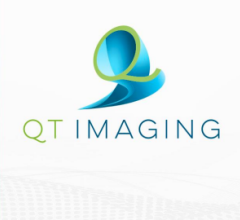
Image courtesy of Focal Therapeutics Inc.
January 8, 2015 — A new surgical device enables breast cancer patients to be treated with dramatically improved targeting of radiation. Findings were presented at the 18th SIS World Congress on Breast Healthcare. The congress was co-hosted by the Senologic International Society (SIS) and the American Society of Breast Disease (ASBD).
A detailed report headed up by Linda Ann Smith, M.D., breast surgeon at Comprehensive Breast Care in Albuquerque, N.M., describes the value of more accurately targeting the site of breast cancer removal. Smith and co-author Robert Kuske, M.D. documented clinical outcomes achieved when using the new BioZorb three-dimensional surgical implant from Focal Therapeutics Inc.
Kuske, of Arizona Breast Cancer Specialists, is the pioneer of accelerated partial breast irradiation (APBI), a five-day alternative to conventional, more lengthy whole-breast irradiation for many early-stage breast cancer patients. BioZorb was used in combination with APBI for many patients in the study.
In the 41 cases summarized in the report, the U.S. Food and Drug Administration (FDA)-cleared device assisted physicians in identifying with greater ease and precision the exact location in the breast that required radiation. The treatments are delivered after surgery in order to decrease the chances of cancer recurrence. Using the implant to visualize the site of breast tumor removal helped to define the radiation treatment volumes, and this resulted in an average decrease of 55 percent. The authors noted that having the implant helped to ensure that the appropriate amount of radiation was delivered to the proper location and it allowed them to confidently exclude radiation exposure to nearby normal tissue.
"To make sure breast cancer patients receive the most precise treatment possible with the lowest possible dose, the marking method must be clear and reliable from both the surgeon's and radiation oncologist's point of view," said Smith. "The marker we studied is well designed from both of these perspectives. It was easily implanted, using techniques that all surgeons know. It then remained in position and defined the site of tumor removal so that the radiation oncologist could precisely target the radiation."
The authors found that with the new three-dimensional marker device in place, they were able to more precisely prescribe the desired dose of radiation, regardless of which delivery method of radiation was prescribed for patients.
Current methods for targeting radiation in the breast can overestimate the volume of tissue that needs treatment, which can lead to poor cosmetic results and inadvertent exposure of adjacent normal tissues to radiation. The device used in the current study is sutured directly to the tumor resection site, which helps to address these issues. Cosmetic results for patients implanted with the marker were noted to be excellent. In all patients, the BioZorb marker remained at the site of surgery with no evidence of migration and there were no infections or device-related complications.
The device's unique open-spiral design incorporates six permanent titanium clips in a fixed 3-D array and provides specific landmarks at the site of the excised tumor. This allows the surgeon to secure the device to adjacent tissue and use it for oncoplastic reconstruction prior to its use in radiation treatment planning. Oncoplastic surgery combines plastic surgery techniques with surgical oncology methods, to help maintain the treated breast's natural shape and contour.
The device has been used successfully in both the United States and New Zealand. It is made of a bioabsorbable material commonly used in other medical devices, allowing the patient's body to absorb the material slowly over time.
The findings of the study presented at the SIS World Congress are consistent with previous research presented at other conferences. The SIS meeting was held Oct. 16-19 in Orlando, Fla.
For more information: www.focalrx.com


 December 16, 2025
December 16, 2025 








